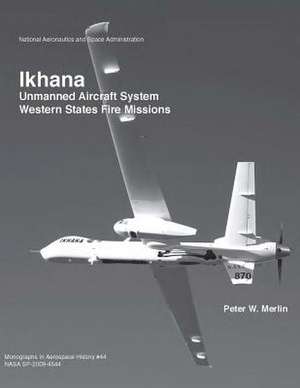Ikhana
Autor National Aeronautics and Administration, Peter W. Merlinen Limba Engleză Paperback
Preț: 111.36 lei
Nou
Puncte Express: 167
Preț estimativ în valută:
21.31€ • 22.17$ • 17.59£
21.31€ • 22.17$ • 17.59£
Carte disponibilă
Livrare economică 22 martie-05 aprilie
Preluare comenzi: 021 569.72.76
Specificații
ISBN-13: 9781493656738
ISBN-10: 1493656732
Pagini: 122
Dimensiuni: 216 x 279 x 7 mm
Greutate: 0.3 kg
Editura: CREATESPACE
ISBN-10: 1493656732
Pagini: 122
Dimensiuni: 216 x 279 x 7 mm
Greutate: 0.3 kg
Editura: CREATESPACE
